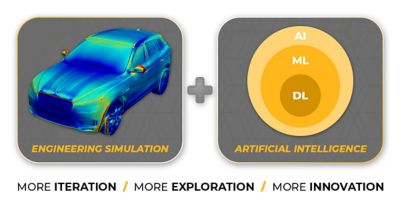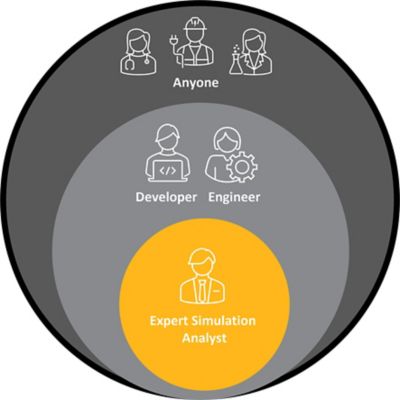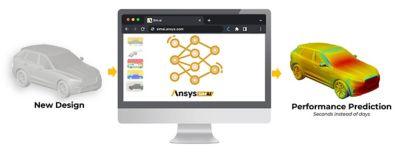-
-
Accédez au logiciel étudiant gratuit
Ansys donne les moyens à la prochaine génération d'ingénieurs
Les étudiants ont accès gratuitement à un logiciel de simulation de classe mondiale.
-
Connectez-vous avec Ansys maintenant !
Concevez votre avenir
Connectez-vous à Ansys pour découvrir comment la simulation peut alimenter votre prochaine percée.
Pays et régions
Espace client
Support
Communautés partenaires
Contacter le service commercial
Pour les États-Unis et le Canada
S'inscrire
Essais gratuits
Produits & Services
Apprendre
À propos d'Ansys
Back
Produits & Services
Back
Apprendre
Ansys donne les moyens à la prochaine génération d'ingénieurs
Les étudiants ont accès gratuitement à un logiciel de simulation de classe mondiale.
Back
À propos d'Ansys
Concevez votre avenir
Connectez-vous à Ansys pour découvrir comment la simulation peut alimenter votre prochaine percée.
Espace client
Support
Communautés partenaires
Contacter le service commercial
Pour les États-Unis et le Canada
S'inscrire
Essais gratuits
ANSYS BLOG
March 6, 2024
The Intersection of AI and Simulation Technology
Since the mid-20th century, scientists and engineers have tested, validated, and improved their designs with the help of simulation. With every model, simulation software generated synthetic data — millions of calculations about what works and what doesn’t. Today, artificial intelligence (AI) is combining these learnings with real-time insights to fill in the gaps of what’s possible, making simulation faster and more accessible than ever before.

Artificial intelligence combined with simulation promises real benefits for engineering
What are the Benefits of Combining AI and Simulation?
Design and development were once limited by the speed and accuracy of individual engineers running simulations by hand. Modeling complex systems took a lot of time and expertise that could delay progress. Today, AI-enhanced simulations speed up design and optimization across industries, especially those in which accuracy and efficiency are critical, such as automotive, aerospace, electronics, and materials science.
AI-enhanced simulations are:
- Faster: AI can analyze past simulations to quickly identify complex patterns while incorporating new information to vet relationships within the data.
- Easier to use: AI can democratize the use of simulation by making it more accessible to nonexperts through user-friendly web-based applications.
- More comprehensive: AI simulations enable the integration of multiple models to provide thorough representations of complex systems.
- Continually improving: The iterative engineering process enabled by AI and simulation enables engineers to improve their designs with less constraints.

AI enables democratization of simulation to a wider engineering audience
How Training AI Enables Fast Predictions
For AI to work, it needs to be smart. Data simulation is widely used to train AI across topics.
Simulation data is pulled from past simulations and fed into the AI system based on the area of interest. For example, if the AI is learning about integrated circuits, the user would load performance results of circuit boards into the software.
Generative AI applied to 3D physics leverages previously generated simulation results from physics-based solvers to train the AI models and deliver faster predictions. An important advancement of data-driven approaches compared to existing reduced-order modeling (ROM) approaches is that engineers don’t need to parametrize their geometries to build the AI model. As a result, the performance predictions can be done across design changes, even when the geometry structure is inconsistent.
During the simulation process, design variants of a geometry are fed to the AI, and prediction of physics performance are almost instantaneous. This makes design iteration, exploration, and optimization much more efficient and accessible to a wider engineering audience, such as designers, system engineers, and methods and tools specialists.
Traditional physics-based solving methods can also be used to validate selected best designs with full fidelity simulation.
The Future of AI and Simulation
The mutually beneficial relationship between AI and simulation will continue to increase efficiency for engineers and designers. As the two technologies become more prolific across industries and applications, their broad adoption beyond engineering will further accelerate human advancement. As more people unlock the power of prediction by combining these powerful tools, the possibilities will expand exponentially.
An example of the combination of AI and simulation is a recent addition to the Ansys product family. Ansys SimAI is a machine learning platform for engineers who want to rapidly explore and predict the performance of new concepts across design phases. SimAI provides reliable and fast results and is accessible through a user-friendly cloud-native application.

Ansys SimAI leverages past data to predict performance of new designs